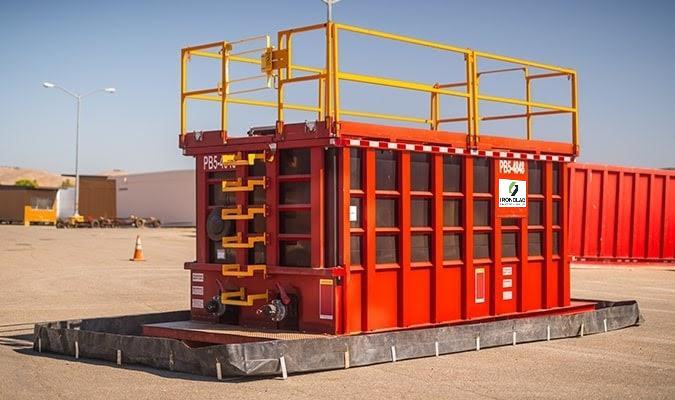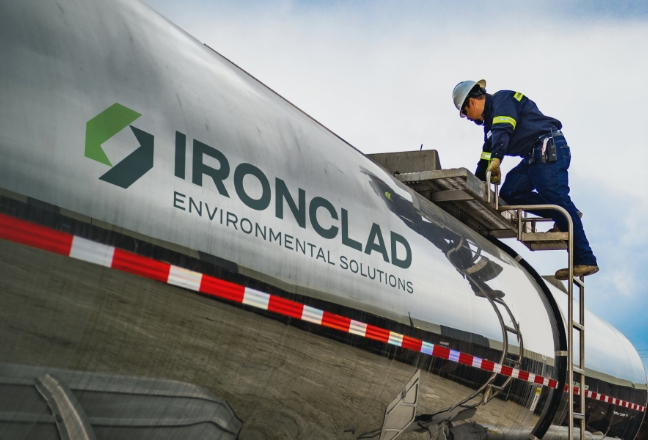Stormwater Detention Tanks: A Comprehensive Guide
The United States Environmental Protection Agency defines stormwater as rainwater or melted snow that runs into streets, lawns, and other sites. Suppose you plan on building a new home in a flood-prone area. In that case, local regulations mandate you detain the stormwater, manage runoff volume, and ensure that the accumulated stormwater runoff does not cause any environmental or health hazards.
Stormwater management refers to efforts to reduce stormwater runoff into surrounding areas and improve water quality. The two most efficient stormwater detention systems for managing runoff are:
- Stormwater detention tanks
- Stormwater retention tanks
What are Stormwater Detention Tanks?
Stormwater detention tanks help you store water from natural sources like heavy rainfall or snow. These tanks only hold stormwater for a limited period, particularly during the rainy season. The design of a detention tank includes specially engineered valves that help gradually release over time.
Impact of Urban Development on Stormwater Management
Impervious surfaces like pavement and roofs prevent precipitated runoffs from naturally seeping into the ground in developed areas. Instead, the water runoff makes its way into drains, sewer systems, and drainage systems, carrying debris, chemicals, bacteria, eroded soil, and other pollutants. When this water comes in too quickly during a heavy downpour, it can cause underground systems like conduits and sewer lines to choke, leading to flooding, erosion, and turbidity.
Local Council Requirements and Compliance
Additionally, your local council regulations ensure that the contaminated water at your property does not reach streams, rivers, lakes, and wetlands. Most new construction, be it commercial or residential, uses an on-site stormwater detention tank in their parking lots, open spaces, and backyards. On-site stormwater detention and drainage systems help manage accumulated water efficiently and follow environmental guidelines.

Stormwater Detention vs. Retention Tanks
Every location receives a particular amount of rainfall. In stormwater retention or harvesting, we collect the water before it touches the ground. We can collect rainwater and use it for domestic, agricultural, and commercial applications, as it contains fewer contaminants. Of course, doing so requires a rainwater retention tank with adequate storage capacity.
Stormwater runoff touches the ground and flows through gutters, runways, and land areas carrying soil, debris, contaminants, and other residues. Such water serves no practical purpose until it undergoes several filtrations, which is why it makes the most sense to drain this water.
If we do not drain manageable loads of this water at regular intervals during heavy downpours, it may lead to floods. In such cases, you require a detention tank that meets your volume requirements.
Rainwater Retention Tanks
A retention tank can serve your purpose well if you wish to harvest rainwater rather than drain it off. Harvesting rainwater can help in the following applications:
- irrigating your garden
- flushing toilets
- topping up your swimming pool without using water supply
- washing your cars and driveway
- washing clothes
- drinking (after proper maintenance or treatment)
This kind of reuse can be particularly beneficial if you live in a rural area or have restricted access to the water supply.
Detention Tanks
Just as the name suggests, these units ‘detain’ water for a brief period and slowly release it over a set amount of time. It can be challenging to rapidly increase the town’s existing stormwater infrastructure in urban and suburban areas. This is why most local council bodies now mandate that new homeowners take some responsibility for managing their stormwater runoff.
Some builders also offer the installation of a dual retention/detention system. This design is beneficial to individuals in areas susceptible to heavy downpours since retention tanks will fill more water quickly in this kind of weather and dispose of the water when needed.
What Are Stormwater Tanks Made Of?
Stormwater tanks come in various shapes, sizes, and constructions. The most common materials for making retention/detention water tanks are:
Polyethylene (PE)
Because PE is strong, durable, and relatively lightweight, it remains one of the most popular water tank materials on the market today. Additionally, high-quality plastic is recyclable and reusable, making it a greener product than other available materials. Poly tanks are easy to install and cost-effective.

Fiberglass
Fiberglass is a lightweight composite composed of glass fibers reinforced into plastics. Although fiberglass is a rigid and light material, it has a thin cross-section that makes it prone to cracking. Depending on the manufacturing route and parameters, the quality of fiberglass differs.
If you intend to store potable water, you must cover a fiberglass tank with a food-grade coating.

Stainless Steel
Stainless steel tanks are versatile, multipurpose units. They offer a combination of excellent durability, aesthetics, and corrosion resistance. Stainless steel retains its properties at high and low temperatures, making it ideal for collecting snow-precipitated water and rainwater in cold and humid areas.
Galvanized Steel
Zinc-coated steel or galvanized steel has a protective layer of zinc on its surface that helps prevent corrosion. Despite being a robust solution for storing extensive rainwater runoff, any damage to the zinc layer may intensify rusting. Zinc is softer than steel, which makes it more vulnerable to wear and tear.
Some manufacturers use polyethylene liners to protect the zinc coating from leaks. These liners also prevent the layer from rusting.
Underground Structures
Another option for managing rain and snow water is building an underground detention tank or a detention pond. Underground detention systems are ideal for urban areas with high population densities and limited space.
What Is Stormwater Management and Why Is It Important?
Below are three critical aspects of managing stormwater:
The Importance of Stormwater Control
Water from rainfall, melting of snow and ice, and condensation will eventually reach the land surface. In natural habitats and rural areas, water seeps into the earth or evaporates. Additionally, plants hold a significant amount of water, preventing runoffs.
However, in urban locations, groundwater remains on the surface. After a while, this water carries soil, pollutants, particulates, chemicals, and bacteria into surrounding streams, rivers, lakes, or wetlands. This runoff water can significantly degrade the water quality in your area and cause soil deterioration and flooding.
Managing Stormwater Runoff
An adequate system intended for managing runoff water includes an infiltration, detention, and discharging solution. You can either harvest and maintain water for personal use or store it for a brief period and release it according to the local guidelines. Other solutions include gutters and spillways, swales, permeable pavements, or on-site discharge. You can use any of these methods, depending on the location, cost, and space constraints.
Understanding the Impact of Stormwater
Reduced penetration of water into the soil can disrupt the natural hydrologic cycle. Accumulation of precipitated water increases the risk of floods, reduces the water quality, and adds to water pollution. Not managing stormwater can also lead to increased stream and soil erosion. Lastly, water-containing bacteria can pose severe health hazards.
Stormwater Management Accessories
Accessories are auxiliary units that make rainwater detention and retention easier. You can purchase these products separately for your project for effective drainage and containment. Commonly used units include:
Pumping Solutions
- High-pressure axial and mixed-flow pumps for controlling peak flow
- Wastewater pumps for heavy, fluctuating wastewater flows
- Metal pipe connections and fittings
Filtration and Treatment
- Filtration systems to catch debris particles and prevent blockages
- Mixers for creating bulk flow with a uniform velocity
Safety and Maintenance Components
- Hydro Ejector for automatically cleaning the tank
- Retention regulators
- Overflow siphons
- Calming inlets
- Rodent guards
- Air gaps

Trust Ironclad for Your Stormwater Detention Solutions
Managing stormwater is crucial for all residential, commercial, and industrial units. Selecting the appropriate stormwater detention tank helps you responsibly manage precipitated water on your property and prevent the risks that stormwater runoff poses.
Ironclad Environmental Solutions is a leading provider of temporary storage solutions. We can help our customers meet environmental compliance requirements. All of our tanks meet stringent local and federal regulations for environmental remediation projects while remaining cost-effective.
We also provide comprehensive rental solutions for stormwater containment, pumping, and filtration. Contact us to learn more about our water storage solutions. Our experts are available 24/7 to answer any questions.
FAQs
What is an on-site detention tank?
On-site detention tanks are multipurpose units with drainage accessories that help store stormwater runoff for short periods. The term can be applied to underground and aboveground systems that possess special-purpose valves for slowly releasing water over a certain period.
Do I need consent for a rainwater tank?
According to the EPA, there are no stringent federal consent requirements for installing a rainwater harvesting system. However, you must ensure that your tanks follow the building and plumbing codes and standards and local regulatory guidelines.
Is it safe to live near a retention tank?
Water retention ponds carry the risk of overflow and pose a threat of drowning. Additionally, they offer a breeding area for mosquitoes. That’s why experts recommend that you build your house at a safe distance from catchment areas.
How do you maintain a detention tank?
You must periodically maintain and clean your detention tank to prevent debris, soil, and other potential obstructions from building up. A stick with a weight attached at one end can help determine the amount of accumulated dirt. You can also use a high-pressure water jet or a vacuum truck to remove the accumulated sediments.